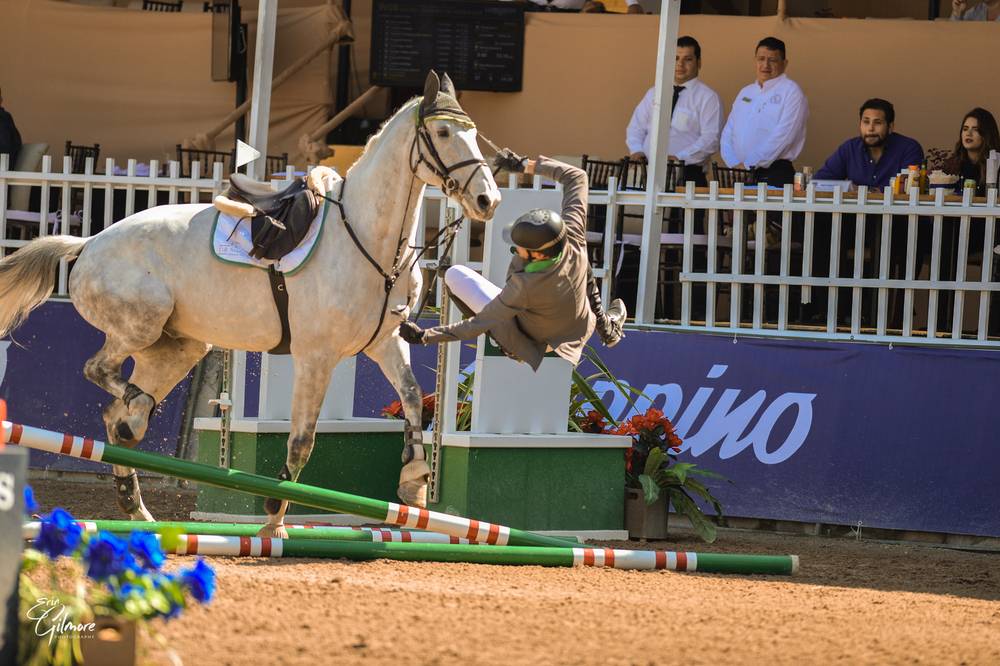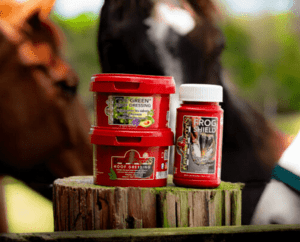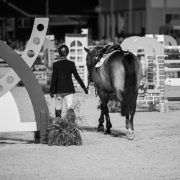Tokyo 2020: Countdown to Show Jumping Disaster?

The only time I’ve ever seen a crash in show jumping bad enough to knock the rider out cold was at an international championship. It was in Normandy, France, during the first round of show jumping at the 2014 World Equestrian Games. Both horse and rider were overfaced. Coming down over a wide oxer, one of many errors in judgment was made. The rider hit the ground with a sickening thud and just lay there, unmoving. Black privacy screens went up, the rider was whisked to the hospital, where thankfully, he recovered.
So why am I bringing up this incident from five years ago? A better question is, what’s bringing this incident to mind, now? The 2020 Tokyo Olympics, that’s what.
There’s been a storm brewing over changes to the Olympic format ever since the one-year countdown to Tokyo began last month. Big, big changes are coming to the equestrian disciplines for what should be the most challenging test of the sport. And no one seems very happy about it.
Let’s review.
Soon after the 2016 Rio Olympics, a decision was finalized among the International Olympic Committee and the FEI. Olympic teams would be comprised of three, not four, in all equestrian disciplines (show jumping, dressage and eventing) would appear at the next Olympics. The drop score was to be done away with, and as yet undecided show jumping scoring changes would endeavor to make the sport more appealing and understandable for the general public. Reducing the size of Olympic teams would also allow for more nations to participate in the Olympics, thereby appeasing the IOC whom it seems, are always demanding, “change or be changed” and about ready to put equestrian sports on the chopping block.
“If you’re picking up 32 faults in a qualifier, you’re far from ready to face up to the Olympic Games.”
The FEI, which answers to the IOC, put these changes through in the interest of growing the sport. For the last few years, the show jumping world generally forgot about this seismic shift the sport is going to make in 2020, but at a public meeting during the recent European Championships in Rotterdam, The Netherlands, it all blew up again. Many of the world’s top riders were in attendance, and they faced off against FEI President Ingmar De Vos.

The WEG 2014 incident that I remember could be a worst-case scenario if riders who are perhaps not up to the Olympic level are able to qualify for a spot because it’s now easier for their countries to do so. For example, there was a curious “special show” qualifier held recently at the LGCT Valkenswaard (The Netherlands) venue, one day after the regular show wrapped up in August, for the Olympic Group G nations of New Zealand, China, Hong Kong, Chinese Taipei, Philippines and Republic of Korea. Competing against each other only, the Kiwis and China earned the two Olympic spots, but the sky-high faults that were racked up among many of the other nations led Ireland’s Cian O’Connor to call these qualifications a joke. As the logic goes, if you’re picking up 32 faults in a qualifier, you’re far from ready to face up to the Olympic Games.
Now for the other side of the coin.
The course designer could—and should if he doesn’t want to see a knockout fall a la WEG 2014—take into account the level of all riders, and build the courses in order to literally protect those weaker riders from accident or injury. If that ends up being the case, what do the Olympics then mean for the world’s top show jumpers? Watered-down competition could make the Olympics less of a priority for those who are best at it—all in the name of growing the sport. Olympic three-day eventing is already run at a lower level than what you see at the Land Rover Kentucky Three-Day Event.
“At every single horse show at every level around the world, there are many reasons why you don’t build your toughest course at the beginning of the week. You want the cream to rise to the top.”
And let’s make it more complicated, shall we?
The individual final will now be held first, before the team final, next year in Tokyo. This decision is permanent, and flips the meaning of an individual Olympic medal on its head. The individual final is normally the toughest stage of the competition, which the top 25 pairs must qualify for over the week. Those riders are the best of the best, as they should be since they are competing for an individual Olympic medal. But in Tokyo, all 75 qualified riders will jump the first individual qualifier on day one, and day two will see the individual final for medals.

At every single horse show at every level around the world, there are many reasons why you don’t build your toughest course at the beginning of the week. You want the cream to rise to the top. You don’t want to overface a horse in its first class of the week. But what will the competition look like if the cream doesn’t have a chance to rise? No course builder wants to overface the competition, which leads me to believe that all we have set ourselves up for is a dumbed-down competition that keeps the weaker riders safe, doesn’t challenge the top riders enough, and finishes with an anticlimactic medal ceremony.
And I haven’t even gotten to the horse welfare concerns around the lack of a drop score during the team competition. “The FEI is going to be responsible for the mess we are going to see in Tokyo,” said a visibly angry Steve Guerdat, currently the No. 1 ranked show jumper in the world, at the meeting in Rotterdam. “We (the riders) had one line from the beginning and that was four riders and teams first. And there was no compromise.”


